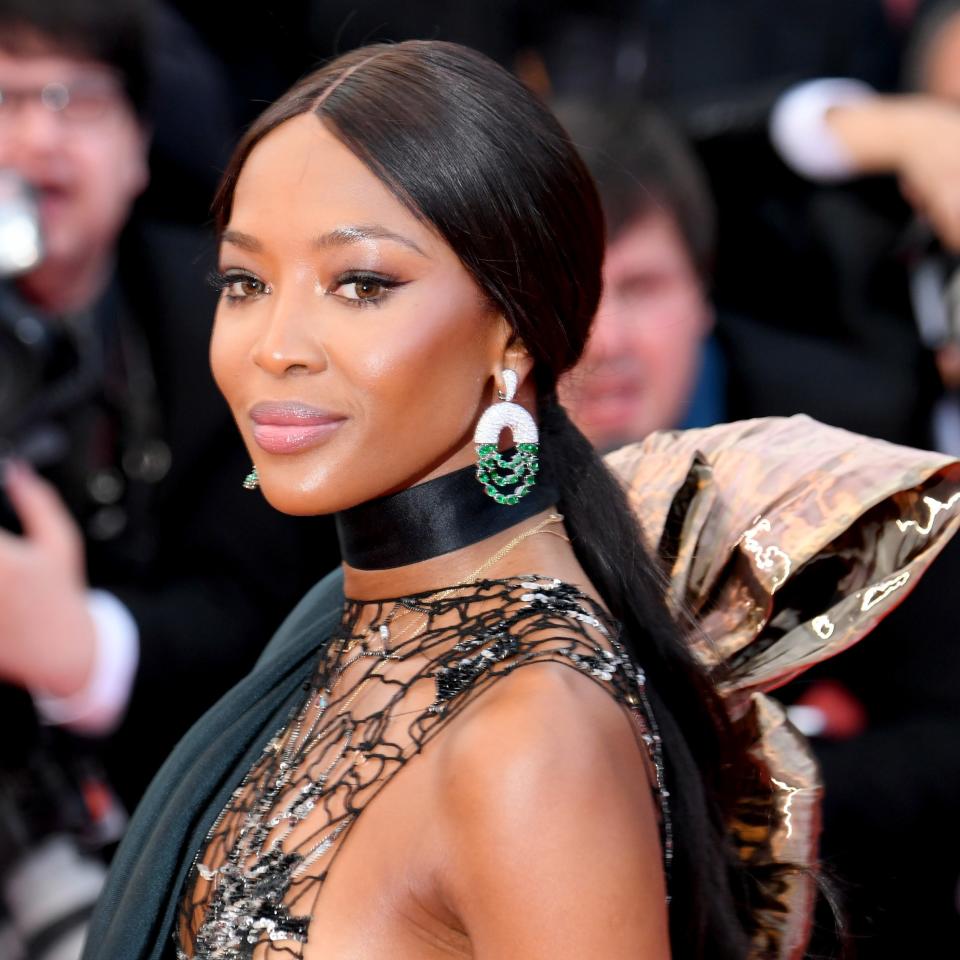The Naomi Factor: The Supermodel’s Friends and Collaborators on How She Became an Icon
The Naomi Factor: The Supermodel’s Friends and Collaborators on How She Became an Icon
![“There is no debate: Naomi Campbell is the world’s greatest supermodel. She’s an icon. She’s a role model. As the first black woman to be featured on the cover of French Vogue, [first black model on the cover of] Time, and many of the world’s most well-known magazines, she is a pioneer and a trailblazer in fashion. She is a leader, having fought to ensure more black women walked the runaway, paving the way for others coming behind her. And she’s an extraordinary humanitarian, using her charity, Fashion for Relief, to create opportunities for less fortunate people around the world. But she’s not done. Not even close. She is still pushing fashion and culture forward and always will. There is no one more deserving of the CFDA Fashion Icon Award than my sister Naomi.”](https://s.yimg.com/ny/api/res/1.2/O.AN3yZ83UgYlLkbdGASug--/YXBwaWQ9aGlnaGxhbmRlcjt3PTk2MDtoPTEyMDA-/https://media.zenfs.com/en-US/homerun/vogue_137/ec8051a987f170e01b57a9054a1b91a8)
Sean Combs
![“The day before her community service [in 2007], Naomi told me, ‘Well, I think I’m going to wear fatigues, and I think I just want to look like a worker.’ Her mother, Valerie, said, ‘No, tell her [not to] do that; go in there as sharp as a tack.’ So the next day we’re talking and I’m telling her what Valerie said, and before I know it we are doing a photo shoot with Steven Klein and it became a cover of W magazine. It was wonderful to watch, amazing! She would go in, and it was such a long walk from the time we’d drop off the car to the place where she had to go, and the paparazzi were on either side of us. That walk became a runway.
Naomi creates her own energy; it’s like a well that she draws from. She puts the water in, starts pumping. She has a talent that way. I used to say to her, ‘Naomi, let’s stop modeling,‘ and she’d say, ’Oh, I like to do it, though.’ I’d say, ‘Well, let’s stop doing fashion shows,‘ and [she would counter,] ‘I like doing fashion shows.’ Everybody else puts their hat on the hook. Not her. She cracked me up on the phone two weeks ago. She said, ‘I don’t know, it doesn’t look like I’m retiring anytime soon.’ I said, ‘Of course not, because you won’t stop!’ When you have that energy, it just catches, and, boy, does she have it.”](https://s.yimg.com/ny/api/res/1.2/bzvIHe0An2s.tsTcO9LccA--/YXBwaWQ9aGlnaGxhbmRlcjt3PTk2MDtoPTEyMDA-/https://media.zenfs.com/en-US/homerun/vogue_137/260404041989a113e8467e3d59e5e2a8)
Bethann Hardison
“The day before her community service [in 2007], Naomi told me, ‘Well, I think I’m going to wear fatigues, and I think I just want to look like a worker.’ Her mother, Valerie, said, ‘No, tell her [not to] do that; go in there as sharp as a tack.’ So the next day we’re talking and I’m telling her what Valerie said, and before I know it we are doing a photo shoot with Steven Klein and it became a cover of W magazine. It was wonderful to watch, amazing! She would go in, and it was such a long walk from the time we’d drop off the car to the place where she had to go, and the paparazzi were on either side of us. That walk became a runway.
Naomi creates her own energy; it’s like a well that she draws from. She puts the water in, starts pumping. She has a talent that way. I used to say to her, ‘Naomi, let’s stop modeling,‘ and she’d say, ’Oh, I like to do it, though.’ I’d say, ‘Well, let’s stop doing fashion shows,‘ and [she would counter,] ‘I like doing fashion shows.’ Everybody else puts their hat on the hook. Not her. She cracked me up on the phone two weeks ago. She said, ‘I don’t know, it doesn’t look like I’m retiring anytime soon.’ I said, ‘Of course not, because you won’t stop!’ When you have that energy, it just catches, and, boy, does she have it.”
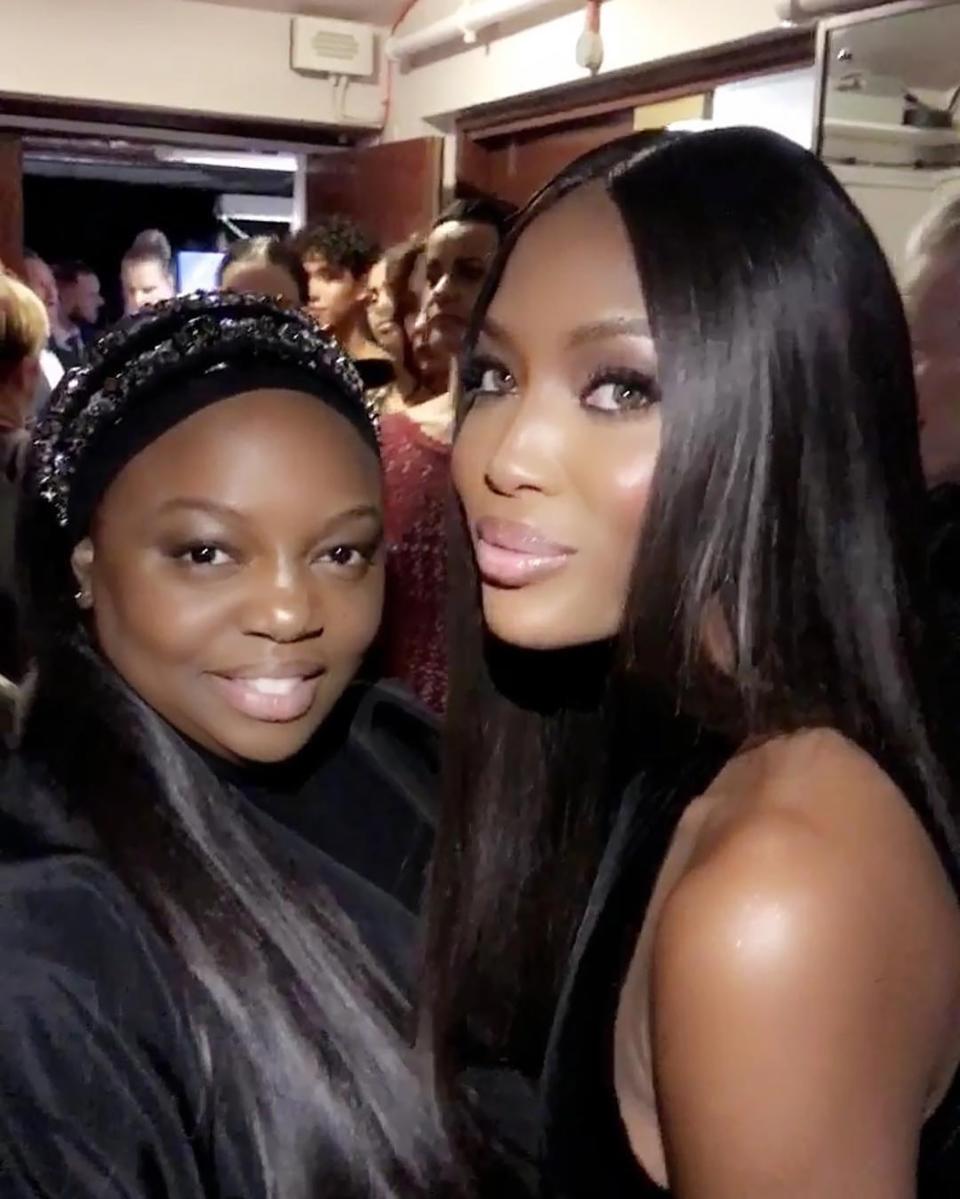
Pat McGrath
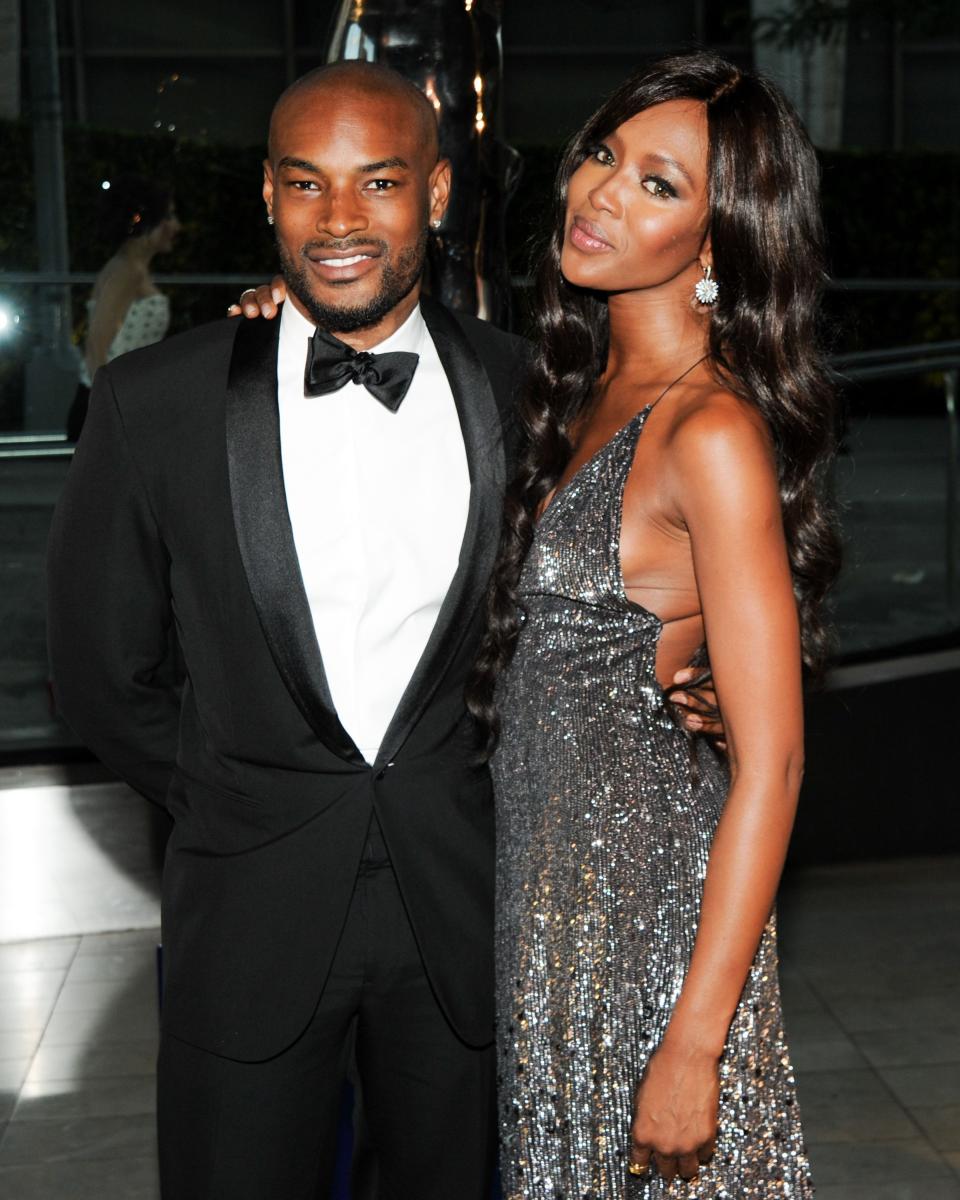
Tyson Beckford
![“You think of Naomi Campbell and you see these things, you hear these stories. Then I was able to meet the woman, know the woman behind the story, and fall in love with her. And then we decided to work together. She auditioned for The Butler, which she did not get. She lost to Oprah Winfrey, but she gave a pretty breathtaking performance in the audition. I was shocked. Then I really got to appreciate her as an actor.
All along we were friends and hanging out and going through life’s ups and downs and stuff. Just on a spiritual journey. Watching her spiritually grow. And having fun with her along the way, helping me through health issues and teaching me about diet and being there for her friend. When she is your friend, there is no one else; she’s intuitive, instinctive, almost to the point of being psychic. It’s crazy.
I first realized she was an icon when we were in Cuba to see the Rolling Stones’s [landmark Ciudad Deportiva de la Habana concert] and people were out of their windows, in these dilapidated buildings, they were sort of waving from windows almost like [she was] Evita Perón, crying out ‘Naomi, Naomi, Naomi!’ [I thought,] How the hell do they know her?
She has affected people so deeply, broken down barriers, and opened her life up publicly. Some of the bad, some of the good. We’ve watched her life in front of us and she’s held her head up high through it all. She represents us right, with style and beauty and class and a knowingness. She is the epitome of an icon, fabulous, wonderful, and so deserving of this award.”](https://s.yimg.com/ny/api/res/1.2/5Q4tQsUn9FGDsYX7P2MbJg--/YXBwaWQ9aGlnaGxhbmRlcjt3PTk2MDtoPTE0MjU-/https://media.zenfs.com/en-US/homerun/vogue_137/dde353045964babbc1afeb9319896f9c)
Lee Daniels
“You think of Naomi Campbell and you see these things, you hear these stories. Then I was able to meet the woman, know the woman behind the story, and fall in love with her. And then we decided to work together. She auditioned for The Butler, which she did not get. She lost to Oprah Winfrey, but she gave a pretty breathtaking performance in the audition. I was shocked. Then I really got to appreciate her as an actor.
All along we were friends and hanging out and going through life’s ups and downs and stuff. Just on a spiritual journey. Watching her spiritually grow. And having fun with her along the way, helping me through health issues and teaching me about diet and being there for her friend. When she is your friend, there is no one else; she’s intuitive, instinctive, almost to the point of being psychic. It’s crazy.
I first realized she was an icon when we were in Cuba to see the Rolling Stones’s [landmark Ciudad Deportiva de la Habana concert] and people were out of their windows, in these dilapidated buildings, they were sort of waving from windows almost like [she was] Evita Perón, crying out ‘Naomi, Naomi, Naomi!’ [I thought,] How the hell do they know her?
She has affected people so deeply, broken down barriers, and opened her life up publicly. Some of the bad, some of the good. We’ve watched her life in front of us and she’s held her head up high through it all. She represents us right, with style and beauty and class and a knowingness. She is the epitome of an icon, fabulous, wonderful, and so deserving of this award.”
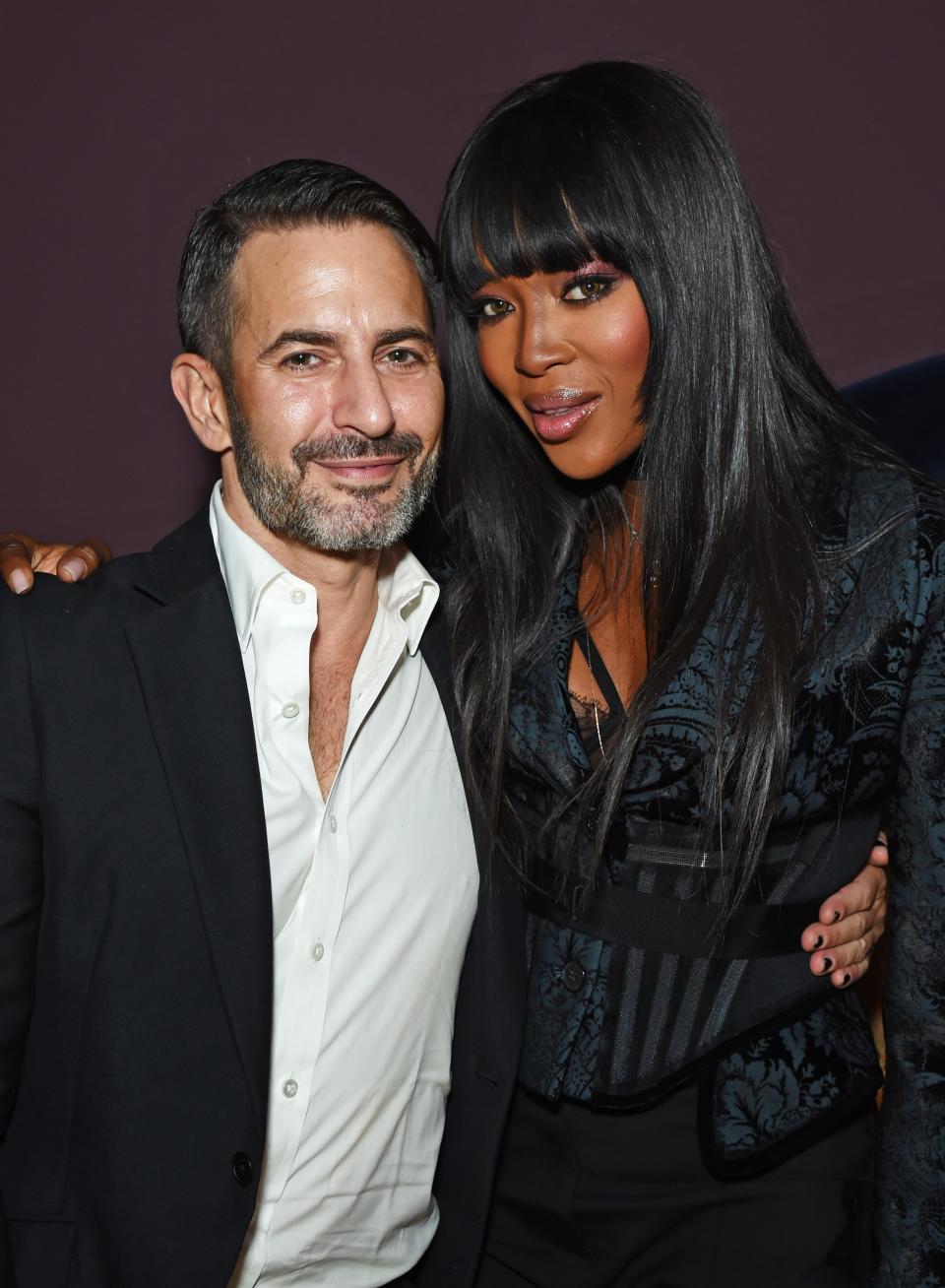
Marc Jacobs
![“I still remember the first time I heard her speak. She had come to the store uptown in Harlem with Mike Tyson, and he’d asked her what her favorite designer was. She said Chanel, Karl Lagerfeld. I’ll never forget it, because she made it look so elegant. At the time just to have someone there who really knew about European design houses was fascinating.
She is the first runway icon of the hip-hop generation. The first one of that stature to come to Harlem and be associated with hip-hop culture. When we’re talking about fashion, she is always the focal point. No one else came around like her and had that kind of impact until Tyson Beckford came along, so she was really the first. For the hip-hop generation they always connect with those associated with that golden age, be they people in fashion or on the street, so she’s really the most connected.
When I look at what’s happening with Naomi getting this award, André Leon Talley having [his documentary], and even what happened with me, it’s a case of the universe saying it’s time to put all the cards on the table. I feel this is something she really and truly deserves. When I look at both of their journeys, I can see the pain and suffering—I have so much respect for them knowing the trials and tribulations they faced.”](https://s.yimg.com/ny/api/res/1.2/FK0miIECsYo0.XYQ7u0Mzg--/YXBwaWQ9aGlnaGxhbmRlcjt3PTk2MDtoPTY0MA--/https://media.zenfs.com/en-US/homerun/vogue_137/4d973705af38cd6c58131907766dba16)
Dapper Dan
“I still remember the first time I heard her speak. She had come to the store uptown in Harlem with Mike Tyson, and he’d asked her what her favorite designer was. She said Chanel, Karl Lagerfeld. I’ll never forget it, because she made it look so elegant. At the time just to have someone there who really knew about European design houses was fascinating.
She is the first runway icon of the hip-hop generation. The first one of that stature to come to Harlem and be associated with hip-hop culture. When we’re talking about fashion, she is always the focal point. No one else came around like her and had that kind of impact until Tyson Beckford came along, so she was really the first. For the hip-hop generation they always connect with those associated with that golden age, be they people in fashion or on the street, so she’s really the most connected.
When I look at what’s happening with Naomi getting this award, André Leon Talley having [his documentary], and even what happened with me, it’s a case of the universe saying it’s time to put all the cards on the table. I feel this is something she really and truly deserves. When I look at both of their journeys, I can see the pain and suffering—I have so much respect for them knowing the trials and tribulations they faced.”
There is only one Naomi Campbell. The CFDA’s 2018 Fashion Icon Award recipient occupies a unique space in the collective imagination. As one of the original supermodels, Campbell helped to define the ’90s glamazon beauty ideal, participating in all of the era’s milestones—a George Michael video, Versace fashion shows, you name it—but unlike many of her peers, her relevance has never waned. Still going strong after more than 30 years in the game, she has redefined what it is to be a fashion star.
One of the first to take the kinds of risks that are now standard for model-moguls, she’s dropped an album, acted on television hits, created an eponymous fragrance line, spearheaded charity initiatives, and become synonymous with attitude on the runway. An idol to Insta-girls like Bella Hadid (with social media skills that rival those of her millennial counterparts), Campbell is name-checked in songs by Beyoncé and widely revered as one of modeling’s all-time greats. Her CFDA moment is another highlight in a career that is already legendary, but she wasn’t always Naomi. To understand how a dance student from London becomes iconic, you have to go back to the beginning.
“So many people, they don’t say, ‘I want to be a fashion model; I want to be a superstar’; they say, ‘I want to be Naomi Campbell . . .’” If anyone knows about Campbell’s early days, it’s scout Beth Boldt. As the woman responsible for pulling Campbell into fashion, she was the first to recognize her potential. While walking through Covent Garden with her daughter during the spring of 1986, she spotted a 15-year-old Campbell out shopping for ballet slippers with friends. “When I saw her, you could just tell—she radiated beauty. I had to go up to her and ask,” says Boldt on the phone from West Virginia, where she’s still seeking out fresh faces after more than three decades in the business. “I’m always shy going up to people and saying, ‘Would you be interested in modeling? You’re so beautiful.’ I had to contain myself, but she said yes right there. I don’t know how she wasn’t scouted before. She always says, ‘Thank you, Beth.’ And I’m like, ‘Me? I was just lucky enough to be there when you crossed my path.’ Because you kind of have to be blind not to see Naomi.”
After signing to Boldt’s agency, Synchro Models, a London-based talent factory that would go on to represent several of the decade’s key talents, Campbell quickly acclimated to her new career. Already trained as a dancer and attending London’s Italia Conti Academy of Theatre Arts, she was primed for a career in the spotlight, appearing in Bob Marley’s “Is This Love” music video at the age of 7 and tap dancing to Boy George in Culture Club’s “I’ll Tumble 4 Ya” at 13. Comfortable in front of the cameras even before fashion became her livelihood, she took to the world of castings and catwalks almost immediately. Booking the job on her first casting, shooting tests with photographer Koto Bolofo, and generally handling herself like a pro, she stood out. “She was just fantastic from the beginning sweet, talented, and lovely,” says Boldt. “Everything you’d ask her to do, she did, [and she was] always on time, extremely professional.”
And driven. Beauty gets a model’s foot in the door, but the common thread among those who manage career longevity is a strong work ethic. Tasked with managing adult responsibilities—schedules, budgeting, networking—while still in school, their skills have to extend beyond posing. From the start, Campbell was a go-getter, according to Jonathan Phang, her first booker. Now an editorial agent and culinary personality on British television, he looks back on his years working with Campbell fondly. “We made some good introductions, but she did it herself! She went out and inspired,” says Phang. “A model has, as in any career, a short amount of time to go out and impress, and, boy, did she do it from day one. I don’t think there was anybody whom she met that didn’t want to work with her.” For models, charm can be a selling point, and Campbell’s helped to elevate her to the next level, something Phang saw firsthand at one of her earliest shows: “One minute she was in her school uniform, the next she was this incredibly confident self-assured, beautiful young woman.”
The modeling business may currently be defined by its push for inclusivity, but in the late ’80s, the accepted logic was that there could only be one superstar of color at a time. Campbell arrived as disco-era trailblazers like Iman, Beverly Johnson, and Pat Cleveland were entering into the second phases of their careers; she stepped into an industry in which black talent was underrepresented and undervalued—a position she helped to shift. “She was there at that cusp when that whole era started. I think she created careers for lots of other women of color, as well. . . . [Naomi] was refreshing. There was not one other black girl at that time who did so well, and that was such an inspiration to everybody,” says Phang, who credits Campbell’s versatility with challenging perceptions. “She fit in everywhere. You could put her into couture at 16 and she looked amazing; she did wonderful work with the Buffalo kids, and she looked fabulous in that, as well. Some models can interpret any outfit and make it work but Naomi [also] had that inner determination.”
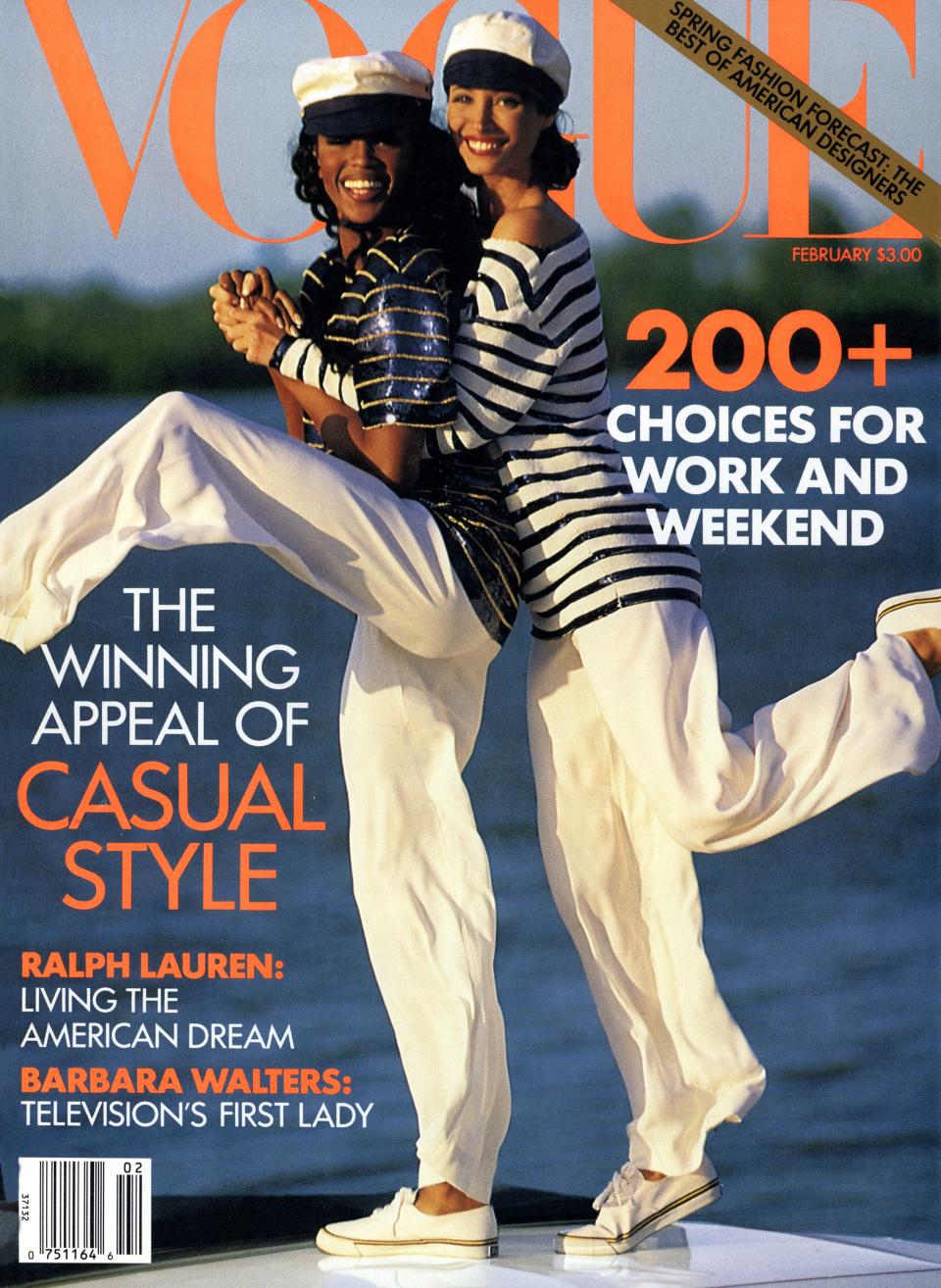
When speaking with her collaborators and friends, Campbell’s resolve is a subject that comes up frequently. Though no one can pinpoint a singular source for her ambition, everyone agrees she’s been proactive when it comes to success. “I’ve always called her a buffalo soldier, like the Bob Marley [song], fighting on arrival, fighting for survival: that was Naomi. That is Naomi every step of her life,” says Bethann Hardison, the boundary-breaking ’60s model turned agency founder and activist. Introduced to Campbell by Boldt in London in 1986, Hardison would become a constant for the next three decades, serving as mentor; confidante; and, on occasion, manager. Spirited, with an innate understanding of her worth, Campbell meshed with Hardison’s forthright personality. “I admire her spunk and her ability to stand up for herself in a way that confronts the greatest storm,” says Hardison. “From a very young age she was not willing to put up with nonsense or let someone treat her less than her white counterparts.”
Demanding respect paid off. By the mid-’90s Campbell had racked up a series of milestones that landed her in the history books. Muse to Azzedine Alaïa and Gianni Versace; the first black model to land the cover of French Vogue; the first black model to open for Prada; and a key presence on the runways and in campaigns for the world’s biggest brands—Ralph Lauren and Fendi among them. Jetting from set to set on the Concorde and becoming a part of the supermodel phenomenon, it would have been enough for Campbell to simply do her work, but she had bigger plans. “I always give credit to Naomi for Naomi being successful; it’s no one else. The other people just try to manage it the best they can within the parameters they have, but she’s the driving force,” says Hardison, who has seen Campbell bring that same energy to creating opportunities for others. “She’s the one who has always kept me conscious of what’s going on in my industry, as far as the lack of diversity. When I had the idea for Black Girls Coalition, she was right there with us. [She] helped to let those girls know what they could do with their celebrity, how they could make change.”
Blazing a trail is never easy, but opening doors for those who have followed serves as an important part of Campbell’s legacy. For Daniel “Dapper Dan” Day, the Harlem couturier, Campbell is a Jackie Robinson–esque figure. “The staircase that she had to climb—it’s something that my spirit wasn’t built for. I would never think this possible coming from the inner city, but to witness what she went through, having to penetrate the white world and an industry with so many blocks in it for us, that is strength,” says Day. Day first met Campbell when she and her then-boyfriend, prizefighter Mike Tyson, headed to his boutique for custom pieces. Day praises her for being ahead of her time. “It should have been more and it should have come earlier—if we had the voices of social media like we have today, the story would have been altogether different,” he contends.
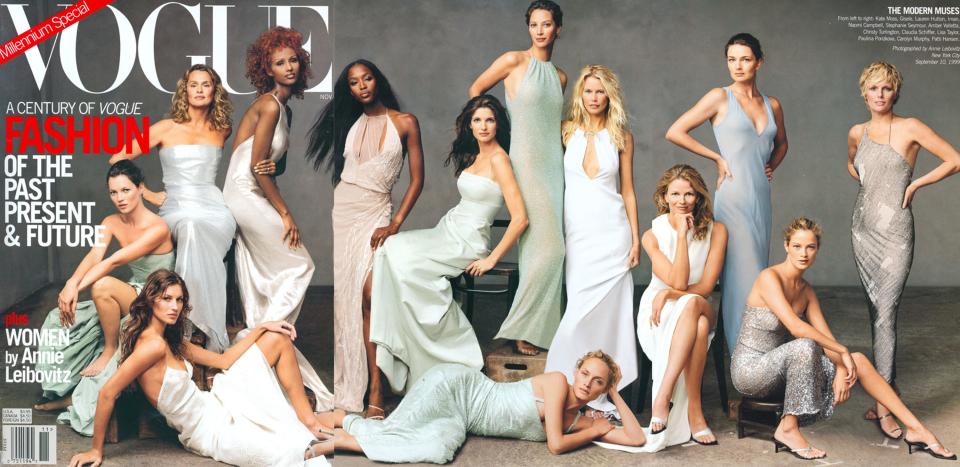
Campbell’s career has not been without controversy. Sentenced to community service in 2006 after an incident with a housekeeper, her issues with anger management came to light. As did a substance abuse problem, revealed via invasive reports in the U.K. tabloids, for which she later sued. Candid about the setbacks and the steps she’s taken to rise from each misstep, Campbell has emerged essentially unscathed, the moments of bad press behind her. The CFDA accolade comes at a turning point. By broadening her reach into acting over the past few years, she’s kept herself busy with roles on several hit television shows. Whether she was trading barbs with Terrence Howard on Empire or fending off vampires on American Horror Story, Campbell proved herself a compelling presence on the small screen, a fact that impressed longtime friend Lee Daniels. Casting Campbell on musical dramas Empire and Star, he has witnessed her evolution as a performer firsthand. Daniels was introduced to her by Lenny Kravitz and bonded with the supermodel after tapping her for a Rock the Vote PSA during the 1996 elections, forgetting that, as a British citizen, Campbell was ineligible to vote. “Only I could make a mistake like that,” shares Daniels with a laugh. “It took a PA to say, ‘Wait, she can’t vote. Is she allowed to vote? Why are we doing this?’ We had to stop halfway through the shoot, but what we did establish was her passion for acting.”
It’s fitting that after years of transforming for designers and slipping from one persona to another on the runway, Campbell’s next phase places her at the center of that other dream factory: Hollywood. If it’s hard to imagine her as anything but a fashion plate, Daniels points to her legendary drive—and a few exciting projects on the horizon. “Naomi is willing to do whatever it takes to prove herself, because she knows the perceptions one has. She’s willing to go and play against it and do whatever it takes. She’s one of the good ones,” says Daniels. “I work with people over time; it’s like a family. And I’m looking forward to working closely together again soon, which I’m not allowed to talk about! I just watch her grow as an artist.” Seems like the ultimate supermodel has found a whole new way to be iconic.
